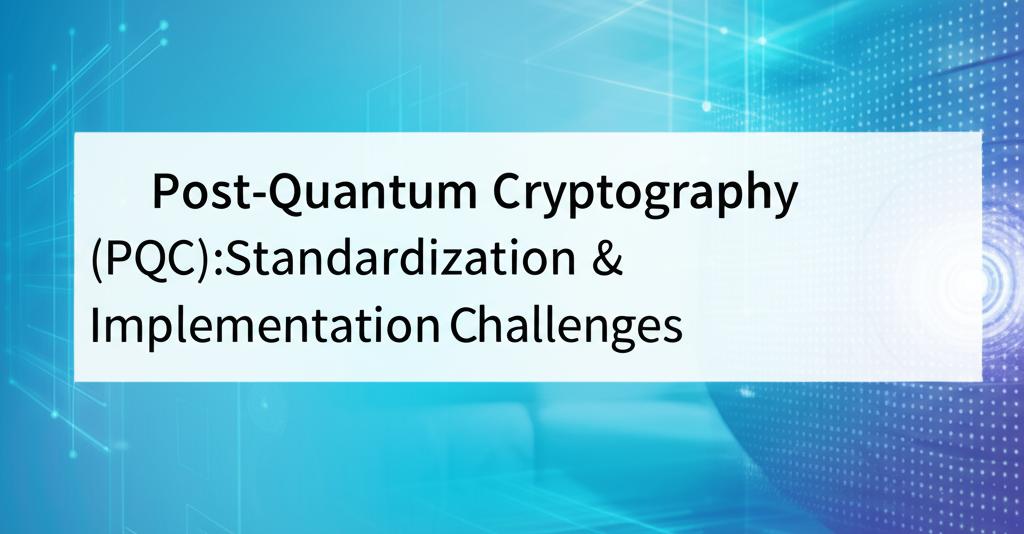The advent of powerful quantum computers poses a significant threat to our current cryptographic infrastructure. These machines, once realized at scale, will be capable of breaking many of the public-key cryptosystems that underpin the security of digital communications and data. In response, the field of Post-Quantum Cryptography (PQC) has emerged, focusing on developing new cryptographic algorithms that are secure against both classical and quantum computers. However, the journey from theoretical algorithms to widespread real-world deployment is fraught with challenges, primarily centered around standardization and implementation.
The Drive Towards Standardization
The most prominent effort in PQC standardization is being led by the U.S. National Institute of Standards and Technology (NIST). Recognizing the impending quantum threat, NIST initiated a public process in 2016 to solicit, evaluate, and standardize one or more quantum-resistant public-key cryptographic algorithms. This multi-year endeavor has involved several rounds of evaluation, with proposals from cryptographers worldwide.
As of early 2025, NIST has made significant progress. Several algorithms have been selected for standardization, primarily for public-key encryption and key-establishment mechanisms, as well as for digital signatures. For general encryption and key establishment, CRYSTALS-Kyber was selected. For digital signatures, CRYSTALS-Dilithium, FALCON, and SPHINCS+ were chosen. NIST is currently in the process of finalizing the standards for these algorithms, with draft standards having been released for public comment. The formal publication of these standards is anticipated soon, which will serve as a crucial catalyst for broad adoption.
Beyond these initial selections, NIST is also considering additional algorithms for standardization in a fourth round, aiming to diversify the portfolio of PQC schemes. This ongoing evaluation underscores the complexity and importance of selecting robust and secure algorithms for the long term. International bodies like ISO/IEC and the IETF are also actively working on PQC standardization, often aligning with or complementing NIST's efforts to ensure global interoperability.
Overcoming Implementation Hurdles
While standardization provides a necessary foundation, implementing PQC in existing and new systems presents a distinct set of challenges:
- Performance Overhead: Many PQC algorithms, particularly some of the earlier candidates, had larger key sizes, signatures, or ciphertexts compared to their classical counterparts (like RSA and ECC). This can lead to increased computational overhead, latency, and bandwidth requirements. While the selected algorithms like Kyber and Dilithium offer more competitive performance, they can still be more demanding than a highly optimized classical system, especially in resource-constrained environments like IoT devices or embedded systems.
- Key and Signature Sizes: Larger keys and signatures impact storage, transmission, and memory usage. For instance, if a PQC signature is significantly larger than an ECDSA signature, it could affect systems with strict data size limitations, such as blockchain technologies or certain communication protocols.
- Integration with Existing Infrastructure: Replacing or upgrading cryptographic libraries and protocols across vast and diverse IT infrastructures is a monumental task. This involves updating software, hardware (as some PQC operations might benefit from hardware acceleration), and ensuring backward compatibility or managing hybrid schemes during a transition period. Legacy systems that are difficult to update pose a particular risk.
- Hybrid Approaches: During the transition phase, many organizations are expected to adopt a hybrid approach, combining traditional algorithms with PQC. For example, using both an ECC key and a PQC key to establish a shared secret. While this offers a safety net if one algorithm is compromised, it adds complexity to implementations and increases overhead. Deciding on the right hybrid strategy and managing it effectively is a challenge.
- Developer Skills and Awareness: Cryptography is already a specialized field. PQC introduces new mathematical concepts and security considerations. There's a need to educate developers and engineers on how to correctly implement and deploy these new algorithms, avoiding common pitfalls that could lead to vulnerabilities.
- Cost and Resource Allocation: The migration to PQC will require significant investment in research, development, testing, and deployment. Organizations need to allocate budgets and resources for this transition, which can be a lengthy and complex process.
- Security Assumptions and Long-Term Viability: PQC algorithms are based on different mathematical problems than classical public-key cryptography. While these new problems are believed to be hard for quantum computers, the field is younger, and the long-term security of some PQC candidates is still under intense scrutiny. The discovery of new attacks, even classical ones, against these new schemes remains a possibility, necessitating ongoing research and crypto-agility.
- Testing and Validation: Thorough testing and validation of PQC implementations are critical to ensure they are both correct and secure. This requires new test vectors, tools, and methodologies tailored to the unique properties of PQC algorithms.
The transition to post-quantum cryptography is not a simple algorithm swap; it's a paradigm shift that will impact nearly every aspect of digital security. While the standardization process is nearing crucial milestones, the implementation journey is just beginning. Proactive planning, investment in research and development, fostering crypto-agility, and international collaboration will be essential to navigate these challenges successfully and ensure a secure digital future in the quantum era. Organizations should start assessing their cryptographic inventories, identifying dependencies, and developing migration roadmaps sooner rather than later.

